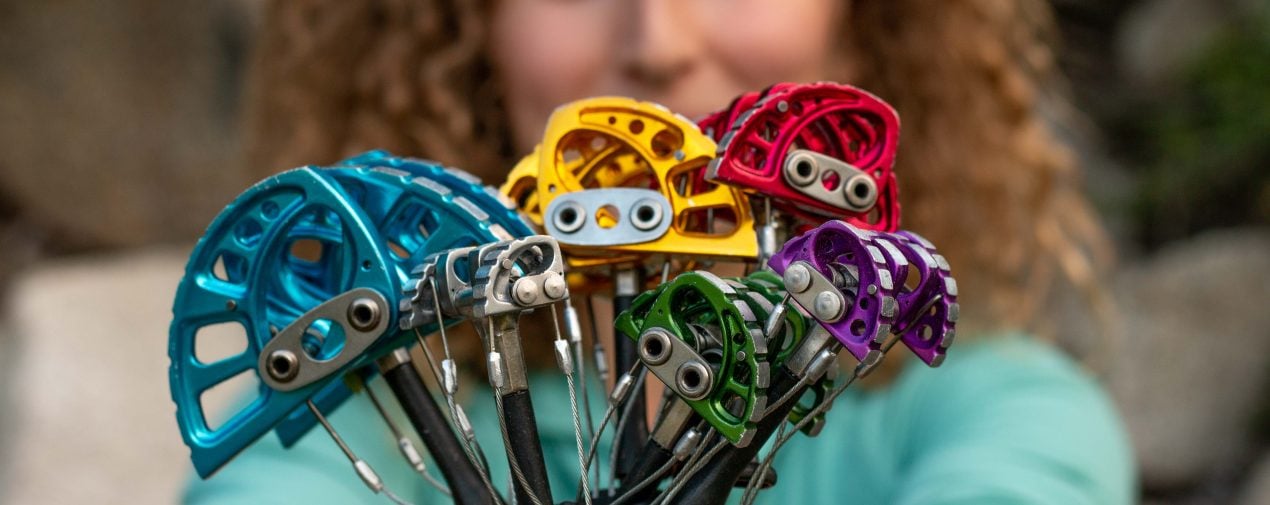When and How to Resling, Retire, or Recycle Your Climbing Gear
***Disclaimer*** Always adhere to the manufacturer’s recommendations for retiring your climbing gear. This guide is meant for education and entertainment purposes only.
The fall climbing season is just around the corner! You may want to pull out your climbing gear and take a brief look at the wear and tear from the last few summer months. There are maybe a few more loose threads on your rope, or some more color worn off your belay device. How do you tell when your climbing gear needs to be reslung, retired, or can be recycled to have a new life as something else?
Resling
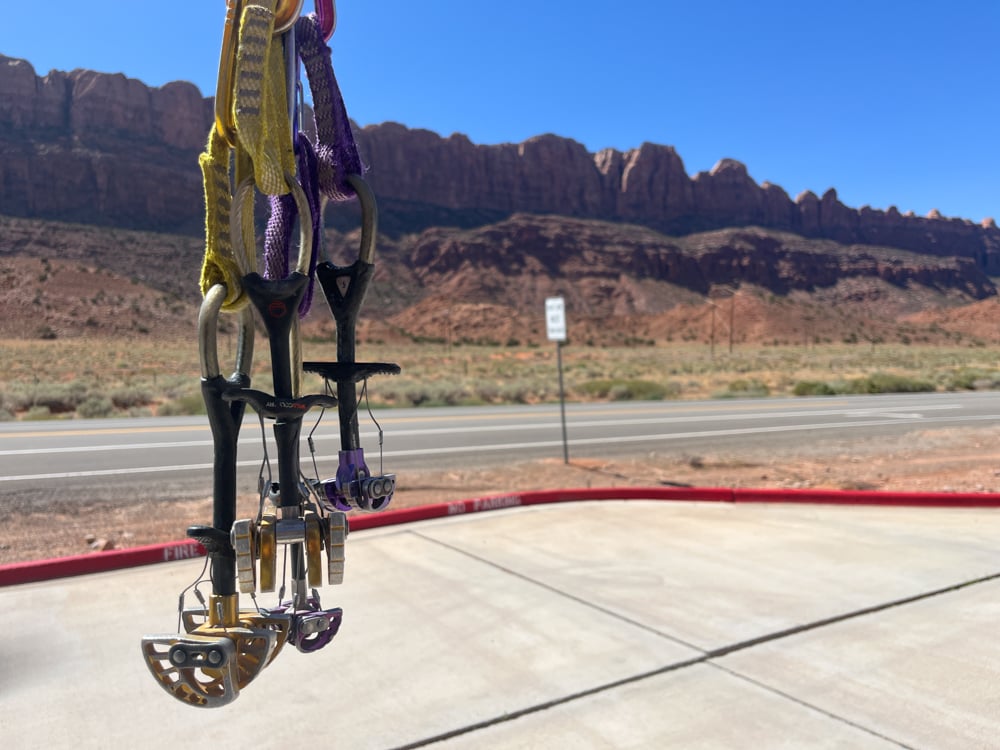
Most commonly, re-slinging your gear is reserved for cams. The metal parts of camalots will last–theoretically–forever. If they are well-maintained and there are no obvious deformations in the metal, cams can be used for a very, very long time.
However, the slings are a different story. Slings can get sun damage, they can cut on sharp edges, and they can simply outlive their shelf life. Cams that are in good working order should have a small tag indicating the year the cam was manufactured. This can help you identify when you should take your cams in to be re-slung.
Many manufacturers will state that their webbing should be retired after 5-10 years. Make sure to check with the manufacturer of your equipment for specific retirement recommendations, as some of them require far less time than 5 years.
Getting your cams re-slung is a great way to preserve their life and use. It should be something you do with care and consideration for the entire cam, but ultimately can let you climb using that gear for longer periods of time.
Retire
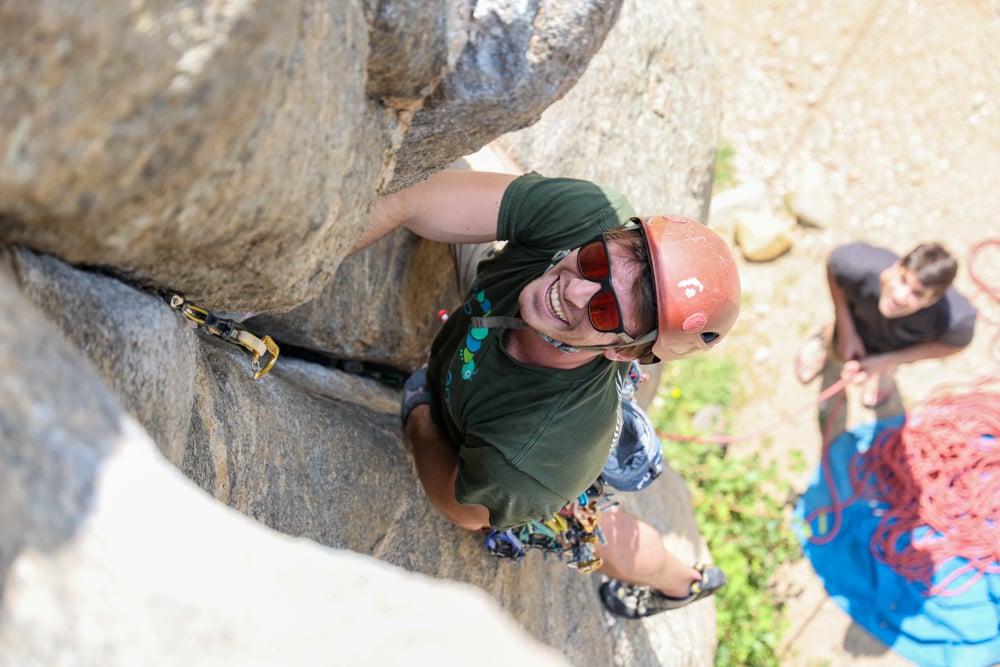
When should you retire your equipment? Not all climbing gear can be repaired for longer use, like cams can. Sometimes, a piece of webbing you’re using, like your Personal Anchor System (PAS) or slings, just need to be let go.
PAS
A Personal Anchor System or PAS should be taken very seriously, as it is sometimes the only piece of protection keeping you off the ground! If you notice excessive fuzzy spots on your PAS, cuts or tears in the webbing, or parts of the internal sheath poking through, you should retire this equipment immediately! Some PAS, like the Ocun adjustable lanyard, are constructed with pieces of climbing rope, and it is possible to replace the worn-out lanyard with a new piece of climbing rope.
Slings
Slings, like the webbing on cams, have an average lifespan of 5-10 years. This changes drastically depending on the use of the slings and the material they are made of, so make sure you check the manufacturer’s specifics! If they have obvious deformities, are stuck in a knot you can’t untie, or are excessively fuzzy, you should retire them.
Belay Devices
While mostly metal, belay devices come into contact with some of the most wear and tear of the climbing system. Sand and grit can get stuck in the rope fibers, which then rub against the metal part of either a Gri Gri or a tube-style belay device like an ATC.
When parts of your belay device get worn down to a sharp point, you should definitely retire them. This often happens on the “lip” of the gri gri or ATC where the rope most frequently runs over the edge of the device. A sharp edge can be dangerous near any climbing rope!
Harnesses
A harness should be treated with care during its use, but once the waist belt or the leg loops begin to wear out, it’s time to get a new one!
Harnesses are the safety mechanism for not just you, but your partner as well. If your belay loop is worn or the metal buckles are beginning to get sharp from wear, then you want to consider getting a new harness to keep both you and your belayer safe while climbing.
Recycle
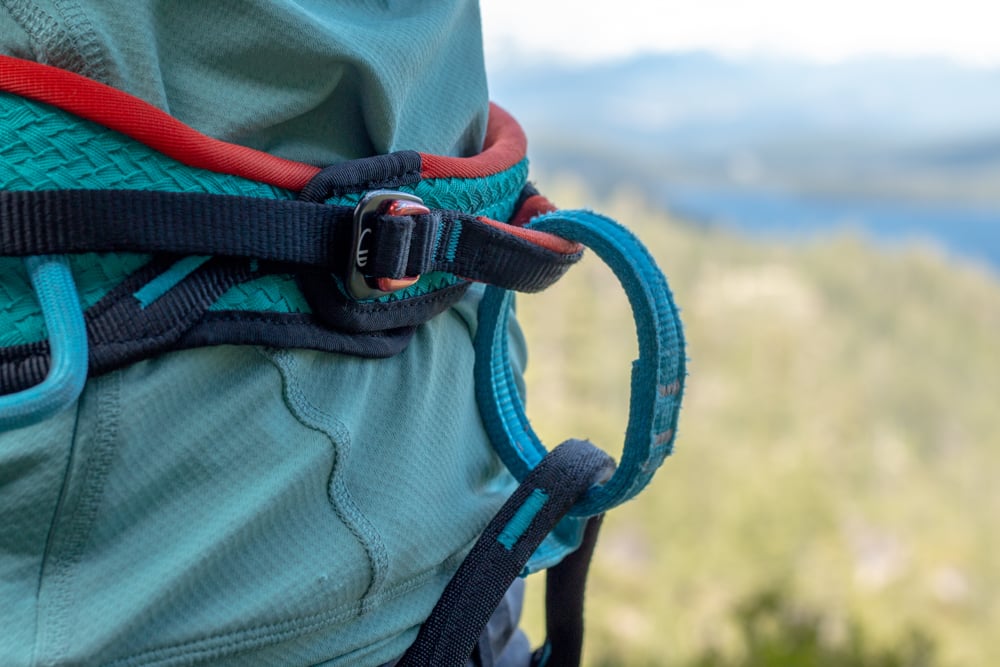
When considering whether or not to repair or retire a piece of climbing gear, remember that you can often recycle the climbing equipment, too! There are tons of fun ways to recycle your climbing gear.
Rope
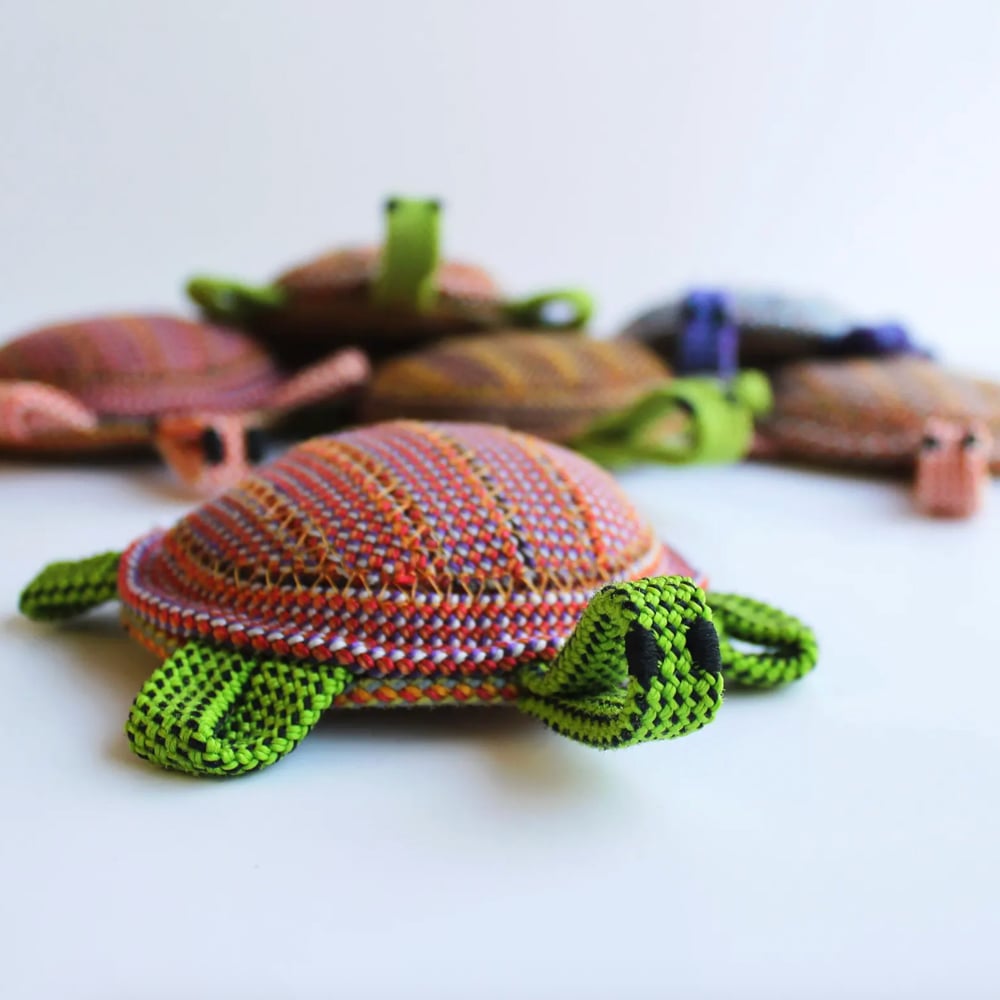
Likely the most versatile piece of equipment as far as reuse and recycling goes. Ropes can be donated or upcycled into Dog Leashes, Belts, Can Cozies, Rugs, or just plain art.
Cams

Cams, once they’ve outlived their usefulness, can be picked apart and the metal parts can be turned into earrings, necklaces, bracelets, belt buckles, and so much more!

At the end of the day, your climbing gear is more than just equipment; it’s your lifeline. Knowing when to re-sling, retire, or recycle your gear isn’t just about following guidelines; it’s about building a responsible climbing practice that prioritizes safety while also honoring the life cycle of the tools that carry you up the wall.
By taking the time to check over your kit each season, you’ll climb with more confidence and peace of mind. And when the gear finally reaches the end of its rope (literally), giving it a second life through recycling or upcycling is a meaningful way to keep it connected to the sport you love.
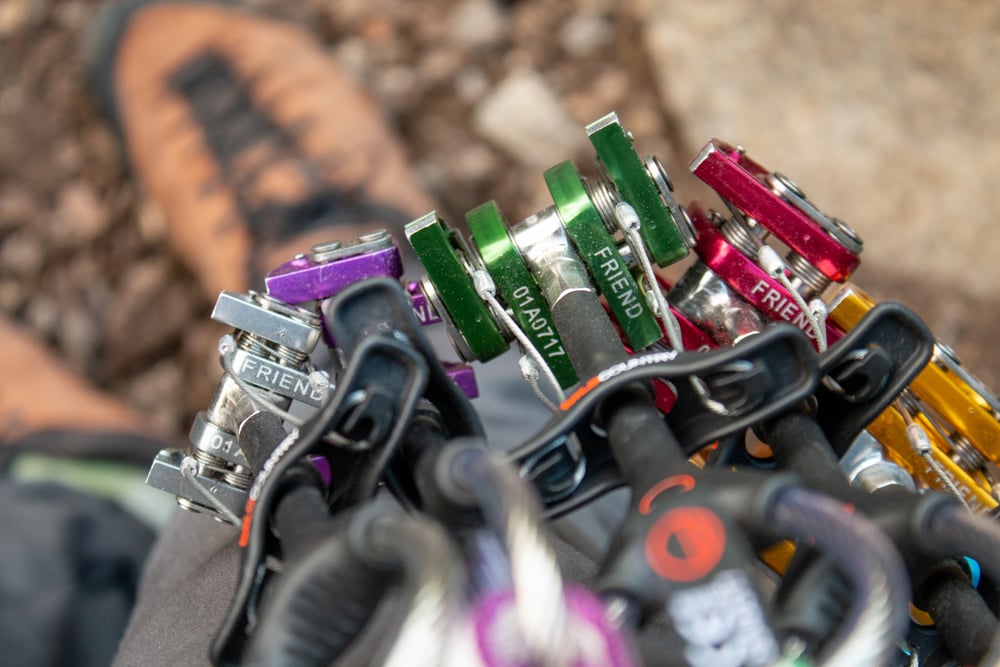
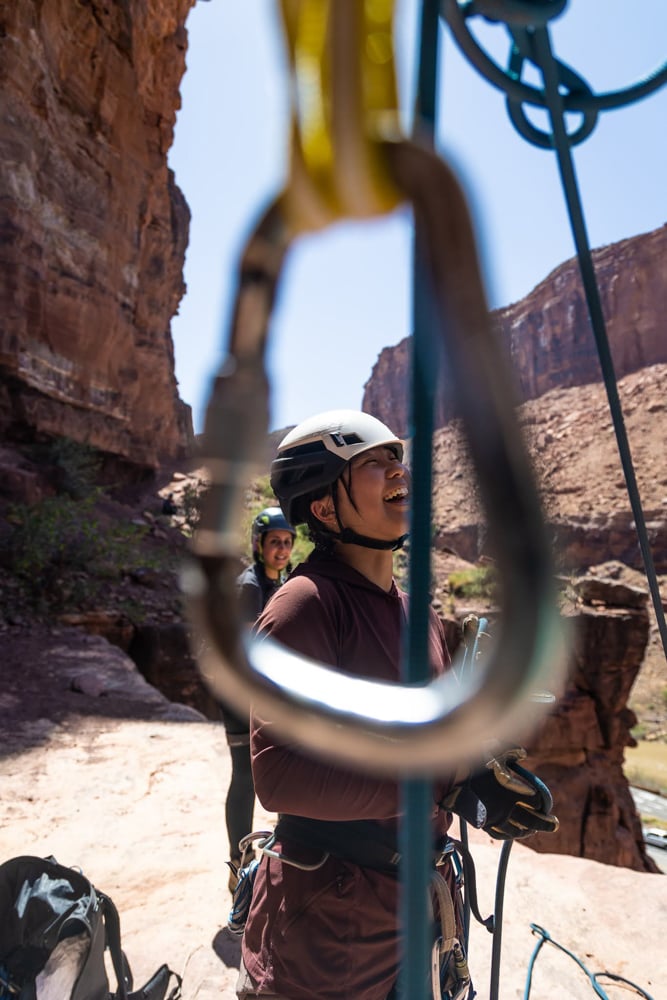
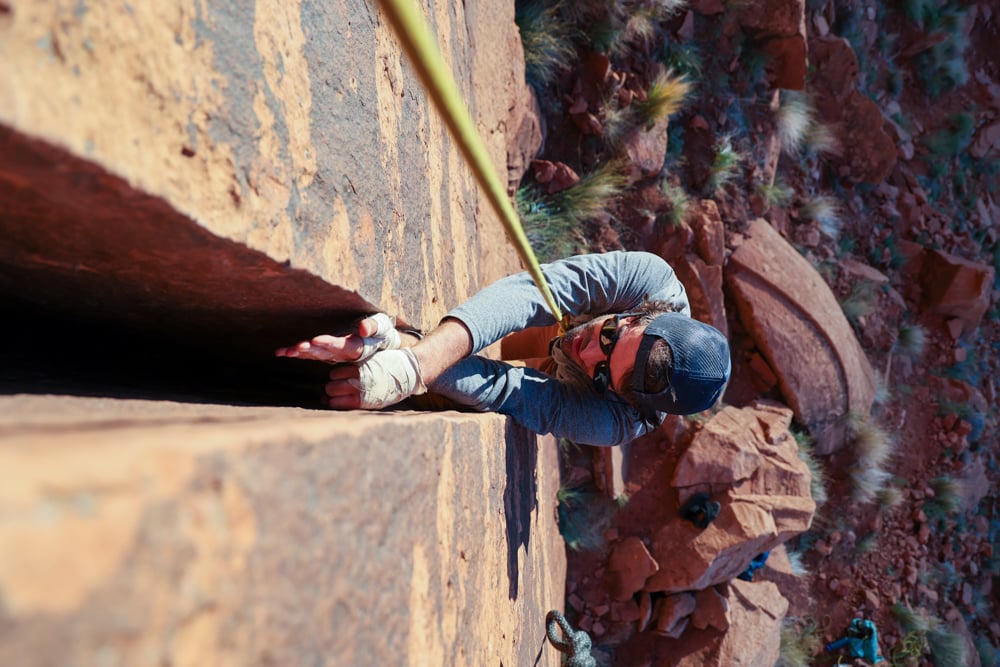
Cover Photo Credit: Kaya Lindsay
About the Gear Tester
Kaya Lindsay is a writer, photographer, and filmmaker with a passion for rock climbing and the outdoors.
In 2016 she converted a Sprinter Van into a tiny home and has been traveling around the US & Canada to pursue her passion for rock climbing. Since hitting the road she has begun a career in filmmaking and is currently working on her One Chick Travels series, highlighting solo female travelers who live and work to pursue an adventurous lifestyle. Her films have been highlighted by major brands such as Backcountry and Outside TV. To fulfill her passion for writing, she chronicles her many adventures in her blog. Professionally, she writes for the adventure sports company Outdoor Prolink and The Climbing Zine. Kaya hopes to spend many more years in her tiny home on wheels, Lyra, and is currently living in Moab Utah.

